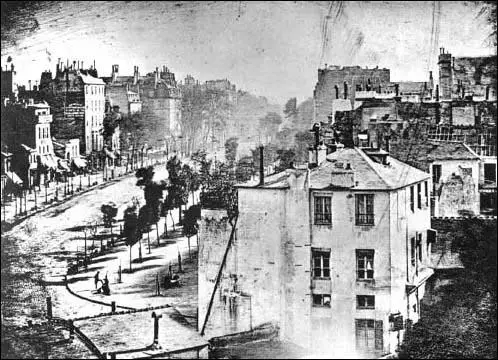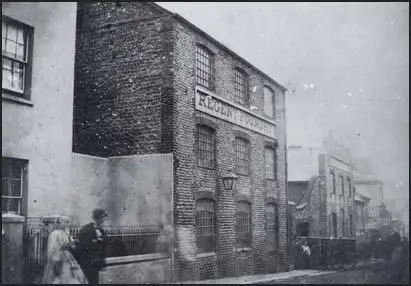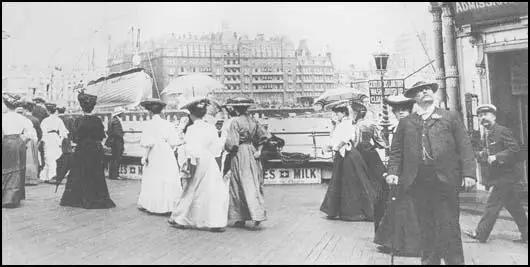Capturing the Moving Figure
When Louis Jacques-Mande Daguerre made his daguerreotype
of the Boulevard du Temple in 1838, the exposure time was so long
(probably between 10 and 20 minutes) he was unable to capture
the hurrying figures and the moving traffic in this busy Paris
Street. Only a man who had to remain still while his shoes were
polished by a boot-black, was completely captured on Daguerre's
silvered copper plate. Although, as a contemporary noted at the
time, the boulevard in question was "constantly filled
with a moving throng of pedestrians and carriages", the
street in Daguerre's early photograph appeared to be completely
deserted "except for an individual who was having his
boots brushed." In fact, the shoeshine man himself must
also be included as one of the first human figures to be depicted
in photography. But as a German magazine of 1839 observed, the
man "having his boots polished . . . must have held himself
extrenely still for he can be very clearly seen, in contrast the
shoeshine man, whose ceaseless movement causes him to appear completely
blurred and imprecise."

The Boulevard du Temple
in Paris, an early daguerreotype view by Louis Jacques-Mande Daguerre
( 1838).
By the 1860s, photographic exposure times had been reduced to
a few seconds, but this still meant that a person who moved suddenly
while the photograph was being taken would become blurred and
indistinct and a figure who passed rapidly in front of the camera
would become almost invisible, leaving only a feint ghostly shape
on the negative.

Figures moving in front of
the Regent Foundry Works in North Road (c1862). Due to the long
exposure time, the young couple on the left are blurred and the
two men walking at a faster pace in the centre of the picture
appear as ghostly, almost invisible, shapes.
Specially prepared gelatin dry plates were so sensitive that out
of doors and in bright sunlight exposure times could be as brief
as one twenty fifth of a second.

Promenading visitors on the
West Pier ( c1900).The quick exposure times of the gelatin dry
plates meant that even swiftly moving figures could be captured
by the camera wihout any blurring.
CLICK HERE TO CONTINUE
Photography
on Location